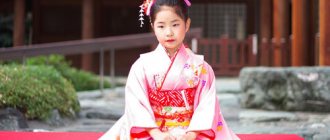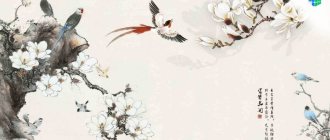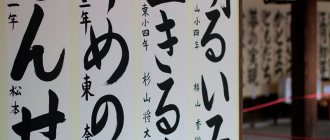There are flowers in Japan that are especially beloved by the Japanese. They are also the main characters of traditional hanami (and not only), flowers that have their own special meanings, names, poetic nicknames, myths and legends. Here are some of them:
Sunflower / Himawari
The Japanese name for sunflower is Himawari .
The color yellow in Japan is associated with the end of summer, representing the life-giving forces of the elements, the earth. It also embodies the idea of "center", balance, order. Yellow flowers are given to those whom they wish goodness and prosperity. In Japan, specially bred ornamental sunflower varieties are planted “for beauty.”
Secrets of a successful gardener
In order for an orchid to grow well, you need to work on properly organized lighting. It must be diffuse. Direct rays of the sun will only do harm. If everything is done correctly, you will be able to regularly see the beautiful flowers of this plant. When mistakes are made, the leaves take on a yellow tint and an elongated shape. In summer, you should not leave the orchid on the windowsill; it is better to put it in light shade, otherwise a burn may occur. She adapts very slowly to bright light after the winter cold. You can use plastic or film.
In the fall, darkening should be eliminated since natural light is no longer as strong. At this time, there comes a period when the orchid experiences dormancy, shoots and buds are formed for future flowers. Not only the strength, but also the duration of illumination is also important. This plant should be exposed to light for at least half a day. You can't leave it in the shade for a long time. To solve this problem, you should use artificial light.
Hydrangea / Hydrangea / Ajisai
Japanese name Ajisai . Most types of hydrangea are shrubs 1-3 m high. The flowers are collected at the end of the stem in spherical inflorescences. The most popular large-leaf hydrangea (more than 600 varieties) has flowers that can be white, blue, lilac, pink, red (depending on the acidity of the soil). In Japan, the peak flowering time for hydrangeas is the rainy season (mid-June). Around many temples and shrines there are many hydrangea bushes (sometimes up to 150 thousand): Meigetsu-in in Kamakura, Fujimori Jinja, Tofukuji in Kyoto. , Hydrangea Festivals (Ajisai Matsuri)
are held in shrines and parks in Japan
Adviсe
Below is a short list of tips that will help you when planting and growing aubretia.
- Aubrieta feels great in direct sunlight, but does not respond well to strong and cold winds. Gardeners recommend planting this perennial plant near a brick wall, fence or extension, which would protect the aubretia from sharp gusts of wind.
- Try to regularly maintain a favorable level of humidity in the tree trunk circle. This plant does not tolerate stagnant moisture, but it will not be able to please you with abundant flowering in dry soil.
- Watering is carried out in the morning or evening to avoid exposure of wet leaves and roots to sunlight. You need to water with settled water - after watering, the soil near the bush must be loosened and cleared of weeds. To preserve moisture for a longer period, a layer of mulch (2-3 cm) from straw, pine needles, bark or rotted manure is organized near the aubration.
For more information on growing aubrieta, watch the following video.
Licorice / Higanbana
Licorice is blooming - and it is impossible to die at such a time. (c) Taneda Santoka
Lycoris ( Higanbana ), Latin name – Lycoris radiata (bulbous plant of the amaryllis family). It originates from Greek mythology - the Nereid Lycoris was famous for her beauty. In English, the names Red Spider Lily and Hurricane Lily because they bloom before the hurricane season. In Japanese, the main name of this flower is Higanbana . It blooms in September - just in time for the autumn equinox - Higana (Aki no Higan) .
But besides this, lycoris has many more names: shibito-bana - “flower of the dead”, yuurei-bana - “ghost flower”, tengai-bana - “a flower that looks like tengai” (decoration of the dome of a Buddhist temple), yome no kanzashi - “a flower that looks like the kanzashi (traditional hairpin) of the bride”, doku-bana - “poisonous flower”, manjushage (in Sanskrit - “manjusaka”) - “heavenly flower” (in Buddhist sutras there is a mention of red flowers falling from the sky, bringing joy), jigoku-bana – “hell flower”, kamisori-bana – “razor flower”, kizune-bana – “fox flower”. So mysterious and ambiguous. And everything would be fine, and they look beautiful, but lycoris is not planted near houses - it is a flower dedicated to the dead. He loves to grow up on the battlefields where the blood of warriors was shed. Traditionally, lycoris is planted in cemeteries (not only as decoration, but also for protection from animals due to its toxicity). It is believed that if you bring flowers into your home, it may cause a fire. But the Japanese specifically planted lycoris on the borders of rice fields. Firstly, the bulbs strengthened the soil, preventing it from weathering and being washed away by water. In addition, poisonous plants protected crops from rodents. And finally, during crop failure, the bulbs and stems were eaten (the poison could be washed out with plenty of water). Lycoris stems emerge from the ground in autumn and bear bright red flowers. Then the flowers fade and leaves appear, which remain until the beginning of summer. So flowers and leaves can never be seen together. In Korea, lycoris was given the name “san cho” - “flowers miss leaves, and leaves miss flowers.”
Diseases and pests of Japanese flowers
The main pests of Japanese flowers are:
- Spider mites and scale insects are combated by wiping plants with soapy water. To prevent spider mites, the Japanese umbrella is irrigated daily with a spray bottle to increase humidity.
- Root or gray rot. Replacing the soil, pruning diseased roots and treating them with potassium permanganate helps here.
- Fungal diseases. Treatment with fungicides helps against them.
If you really want to, you can create a little Japan at home by growing flowers and enjoying their beauty. But in order for everything to go without a hitch, you should keep in mind the features of cultivation and care described above.
Wisteria / Wisteria / Fuji
The Japanese name Fuji is a genus of deciduous vines. They grow naturally in China, Korea and Japan, as well as in the southeastern regions of the United States. The most famous are Chinese and lush-flowering (or Japanese) wisteria. The liana can climb up to 20 meters, twisting around the trunk of a supporting tree or artificial support. Wisteria blooms in spring or in the first half of summer (depending on the type). Inflorescences of fragrant flowers of lilac, white, pink, blue can be up to 1 meter in length. Wisteria is used in landscape design. At festivals, it is often used to decorate floats or “flower umbrellas.”
Orchids - a favorite of the Japanese from another fairy tale
It is generally accepted that orchids, which can be seen so often in Japanese pictures, are also a kind of symbol of the land of the rising sun. In fact, this is not so, because the birthplace of the orchid is considered to be South America, although the flower itself is highly revered in Asian countries, for example, in Thailand and Japan.
In Japan, they love orchids, and the climate of this country is perfect for growing this exotic plant. It is the Japanese who quite often conduct experiments when growing orchids at home and modify their colors, flower shapes, or propagate plants in a simple way.
Learn to admire flowers from the Japanese and then life around you will seem much brighter, more colorful and tender, and calmness, tranquility and a complete feeling of happiness will flourish in your soul.
Camellia / Camellia / Tsubaki
Japanese name Tsubaki . Belongs to the tea family. In Japan (and beyond), the most famous is the Japanese Camellia (Camellia japonica) , which originates from Southwestern China.
Wild camellia is an evergreen shrub 6-9 meters high with red flowers 5-8 cm in diameter, having five to six petals and dense stamens. Many hybrids of red, pink, cream and other colors have also been bred. Some of them are double, similar to roses or peonies. One of the names of camellia is “winter rose”. In areas with a mild climate, it can bloom in the middle of winter; the flowering period is 4-5 months. Camellia is widely used for landscaping parks, gardens and indoors.
Description
- The main type of stone flower is the common or coin-leaved sunflower. The Latin name of the plant is Helianthemum nummularium.
- The homeland of the evergreen Helianthemum is the territory of Southern Europe and the Mediterranean.
- Sunflower is a subshrub with dark green upper leaves. The lower lanceolate leaves have a fleecy surface and a gray-green color.
- The maximum plant width is 0.6 meters. The height reaches 0.5 meters. The leaves reach 5 centimeters in length. Inflorescences are formed from buds of different colors. In total, up to 12 buds of different shades can grow in one inflorescence.
- The main range of shades is red, pink, white and yellow. The formation of the fruit occurs at the end of flowering and is a single-locular or three-locular capsule.
- There are seeds inside. Sunflower photo of an overgrown coin type.
- Sunflower belongs to the cistus family of perennial herbs. There is a small group of one-year and two-year representatives.
- Massive main flowering occurs in May-July. Under natural conditions, the plant is found in North America and Europe. The plant is cultivated throughout the Eurasian continent and North Africa.
Varieties and types
There are several types of sunflower. Many varieties have been bred based on the main subspecies.
Helianthemum Cherry Queen
The variety belongs to the evergreen perennial herbs of the semi-shrub type. The perennial can be grown in sunlit areas with dry soil. Budding continues from April to August.
The advantages of the variety are the following qualities:
- Frost resistance;
- unpretentiousness to soil and care;
- bright rich color;
- flowering duration;
- resistance to temperature changes and drought.
Satin bright red petals with a yellow center create a picturesque carpet. Double flowers reach 4 centimeters in diameter. The height of the plant reaches 40-45 centimeters. During the growing season, lower woody stems are formed. Spring shoots of the semi-creeping species are partially raised.
Growing conditions
Growing the Cerise queen variety requires the use of certain agricultural techniques.
Trimming
After flowering is complete, the stems are cut off, leaving woody shoots.
This pruning improves the appearance of the bush. The plant takes on a compact shape. During snowless and cold winters, this technique increases frost resistance. The Cerise Queen variety can withstand frost down to -24 degrees. In colder winters, part of the plant may freeze out, but is gradually restored.
The soil
This variety of Heliantemum does not require too fertile soil. Can grow on sandy loam, gravel and sandy substrates. The plant tolerates dry periods. But does not like waterlogging.
The soil should be alkaline and neutral in terms of acidity. Sunflowers require well-drained soil.
Helianthemum "Gold Coin"
- Sunflower "GoldCoin" (from English Golden Coin) is a subshrub from 10 to 35 cm in height. The plant blooms with red, white, pink and yellow flowers. The maximum diameter of fully bloomed buds is 2.5 cm.
- Silver-green leaves combined with flowers of different shades form a bright, picturesque carpet.
- First, "GoldCoin" is planted with seeds in a greenhouse in March and April. Then in May they are either transplanted to a permanent place or sown directly into open soil.
- The distance between seedlings when planting is 40-50 cm. In the second and third years, the sunflower grows and the result is a continuous multi-colored carpet.
- The plant blooms for 3 partial months: May, June, July. The variety is very popular among gardeners in the middle zone. The main advantage of GoldCoin is its winter hardiness.
According to reviews from gardeners, the variety can withstand very low temperatures without shelter. The disadvantage is intolerance to waterlogging. The plant loves drained and loose soil. Another disadvantage is the poor survival rate when dividing and planting bushes. The best planting option is sowing seeds.
Sakura / Sakura
Sakura (Japanese - Sakura ) - Japanese cherry. Wild sakura grows in China, Korea and Japan, but in Japan new varieties have been bred for a long time (there are several hundred of them). The most popular type of sakura is Somei Yoshino . Its petals are pure white, only slightly pinkish at the base of the flower. Fuyuzakura - winter sakura begins to bloom in the fall, and sometimes also in winter. Yaezakura has large flowers with dark pink petals. Shidarezakura (weeping cherry) has long branches hanging down with a cascade of pink flowers. Small sakura fruits are not eaten. In cooking, salted or pickled flowers are used (to add flavor to dishes), as well as leaves in which sakura-mochi, sweet rice balls with sweet bean paste, are wrapped.
Cultural Studies Analytics
Author(s) of the article: Tolmacheva U.K. Section: APPLIED CULTUROLOGY Key words: flower, sayings, everyday life, poetry of everyday life
Abstract:
Flowers are also used in many other Japanese proverbs and sayings. The proverb, literally translated from Japanese as “others’ flowers are redder,” correlates with the Russian “the neighbors’ grass is greener.” The Japanese “flower on the top of the mountain” is similar to the Russian “the eye sees, but the tooth numbs.” When we say: they are greeted by their clothes, they are seen off by their minds, the Japanese can say: beautiful flowers do not bear good fruit.
Article text:
Flowers are an integral part of Japanese everyday life; images of flowers accompany them everywhere from birth to the last hour. “Once you see, you cannot help but see flowers... When what you see is not flowers, you are like a rude barbarian. When there are no flowers in your thoughts, you are like a wild beast,” the poet Basho once left this entry in his travel diaries. In Japanese culture, a flower almost always personified the soul, the living heart of nature.[1]And the moment of flowering itself is a symbol of the highest moment in the continuous cycle of extinction and rebirth.
Linguistic analysis can give a particularly vivid picture of the culture of a particular country. Speech contains a picture of the world as it appears to native speakers. And in this case, it seems necessary to somehow resort to the study of some elements of Japanese speech, such as proverbs and sayings.
By looking at the proverbs and sayings that exist in Japan, you can understand how important a role flowers play in their lives. Thus, the Japanese proverb “silence is a flower” has the same meaning as the Russian “silence is gold”, where the ability to remain silent at the right moment is compared to the greatest treasure. For the Japanese, the greatest treasure is a flower.
Flowers are also used in many other Japanese proverbs and sayings. The proverb, literally translated from Japanese as “others’ flowers are redder,” correlates with the Russian “the neighbors’ grass is greener.” The Japanese “flower on the top of the mountain” is similar to the Russian “the eye sees, but the tooth numbs.” When we say: they are greeted by their clothes, they are seen off by their minds, the Japanese can say: beautiful flowers do not bear good fruit. When a Japanese refers to someone's belated services or efforts, he says: chrysanthemums on the tenth. Anyone who knows that the Chrysanthemum Festival is held on September 9 in the Land of the Rising Sun can understand this proverb. A Russian person would say on this occasion: a spoon is dear to dinner.
The Japanese people have come up with many unique proverbs about flowers. The expression “lotus in the mud” goes back to the ancient Buddhist wisdom “the lotus grows from the mud, but remains clean.” The saying “there is a storm on flowers” reminds of the vicissitudes of fate, and the phrase “a fallen flower will not return to the branch” - of the irrevocability of love or, sometimes, life.
Another cultural phenomenon - folk signs - also allows us to judge how deeply floral symbolism has penetrated into the everyday life of the Japanese. For example, one of them says that a patient should not be given a flower in a pot, since it is believed that then his illness will “take root.” The Japanese will also not give anyone three flowers, since one of the readings of the hieroglyph “three” is mi, which can also mean “body.” By cutting three flowers, a person thereby “inflicts a wound” on the person for whom they are intended, and can aggravate his illness. Four flowers cannot be given as a gift, since the word “four” in Japanese has a si sound, which is consonant with the word “death”.
In a Japanese house, there is always one important detail - a sacred niche, tokonoma, located in a fixed wall of the room. Tokonoma is the spiritual center of the house. This may include a traditional Japanese print, or a scroll with a calligraphic saying, motto or poem. A mandatory attribute of a tokonoma is a small flower arrangement - ikebana.[2]
Ikebana is the art of flower arranging, elevated to the level of art by the Japanese. Another name for this art is kado, “the way of the flower.”[3] Ikebana originated in Japan in the 15th century and originally had a religious orientation, being an offering to the gods in Japanese temples. The art of flower arranging is associated with quite complex symbolism, reflecting the teachings of Zen Buddhism. Ikenobo should be considered the first school of development of ikebana. Ikenobo was founded in the mid-15th century by Ikenobo Senkei, a priest at the Rokkakudo Buddhist temple in Kyoto.
Ikenobo Senkei wrote: “The art of ikebana is usually thought of as copying the natural forms of plants as they grow in fields and mountains. However, ikebana is neither a copy nor a miniature. In ikebana, we arrange one small branch and one flower in the boundless space and endless time, and this work contains the whole soul of a person. At this moment, the only flower in our mind symbolizes eternal life.”[4]
In the mid-15th century, a style of ikebana developed called Rikka - “Standing Flowers”. Solemn monumental compositions expressed the philosophical image of the universe. They embodied the mythical Mount Meru, which symbolized the Universe. The tallest plant here represented a mountain, the rest represented hills, waterfalls and even a city. The flower arrangement could be more than one and a half meters high and about a meter wide.
The Rikka style flourished in the 17th century. Compositions in this style were used to decorate homes on the occasion of important events. A wedding, the birth of a child, a samurai going on a military campaign - all this was accompanied by flower arrangements created according to strict rules. Thus, when the samurai left, it was forbidden to use camellia, since as the flower withered, it was torn from the stem. This was associated with a severed head and could be a bad omen.
The most modern of the ikebana schools is the Sogetsu (“Moon and Herbs”) school, which arose in 1927. Compositions of this school are created according to certain schemes, which indicate the sizes and angles of inclination of the three main lines that form the basis of the composition. As in ancient times, these three lines symbolize Heaven, Man and Earth.[5]
The main line is the stem representing Heaven, often called primary, or xing. It is this stem that forms the basis of the bouquet, so it must be strong enough. Next to it is placed a second stem - a symbol of Man, called soe. It is placed in such a way as to give the impression of growing to the side. The soe should be approximately two-thirds the height of the xing and tilted in the same direction. The third stem of the tai, symbolizing the Earth, is the shortest. It is placed in front or slightly shifted to the side opposite to where the first two lean. This stem makes up two-thirds of the height of the soe. All stems are fixed so as to give the impression of the crown of a single trunk, thereby symbolizing the unity and inseparability of Heaven, Man and Earth.[6]
A small symbolic arrangement of flowers placed in a tokonoba plays a special role in the life of the Japanese. It allows a person to come into contact with the natural world. Previously, this important function was performed by the Japanese garden. In the modern world, not every Japanese can afford this luxury - to have their own corner of nature in the courtyard.
The garden was an extension of the traditional Japanese house. It acted as a fence and at the same time connected the house with the environment. When the outer walls of the house were moved apart, the boundary between the interior of the house and the garden disappeared and a feeling of closeness to nature and direct communication with it was created. This was an important feature of the national outlook.
Residents of the Land of the Rising Sun take arranging their garden space very seriously. In Japan, there is a generally accepted system of meanings for various types of flowers, which takes into account not only their shape and size, but also color.
White lilies are often grown in artificially created ponds, creeks and small lakes, which symbolize spiritual purity and innocence, devotion and selfless love. If in the center of the pond there is a stone tower surrounded by white lilies, then this place is considered the purest and most sacred in the garden. If dark yellow and bright orange lilies grow in a pond, then the owner of the garden is a cheerful and cheerful person.
The camellia flower is beautiful, it fascinates with its beauty and sophistication. In Japan, it is considered a symbol of sadness and death, but at the same time it represents spiritual purity and dignity. In the garden, camellia is used as a reminder of those who are no longer in this world.
Azaleas in the garden are usually planted by prosperous families in which relationships are built on love, trust and mutual understanding. Which is no coincidence, because azalea is a symbol of love, friendship, fidelity, emotional affection, openness, and adoration. The flower protects family happiness and has a calming and calming effect on the beholder. Lush inflorescences located close to the stem personify unity and inviolability in relations between members of the same family.
A beautiful lush dahlia means greatness and nobility, goodwill and responsiveness. A person who wants to demonstrate his refined taste, sincerity and strength of character must use dahlia flowers in the composition of his garden.[7]
In Japan, as well as in China, there is a flower calendar. The poet Fujiwara Teika wrote “Poems on Flowers and Birds of the Twelve Months” in 1214, in which each month had its own pair - a plant and a bird. Later, it was from these verses that the so-called flower calendar with symbolic overtones was formed, which had slight differences in different areas. It looked something like this: January - pine; February - plum blossoms; March - peach and pear; April - sakura; May - azalea, peony, wisteria; June - iris; July - morning glory (a flower from the bindweed family); August - lotus; September - “seven herbs of autumn”; October - chrysanthemum; November - maple; December - camellia.
Japanese hanafuda flower cards are based on the poetic calendar of Fujiwara Teika. Twelve months, indicated by flower pictures, form suits. There are four cards in each suit (48 cards in total). Just as regular cards can be played in different ways, hanafuda is played in different ways.[8]
It is noteworthy that sake cups often feature flowers included in hanafuda cards. In Shinto shrines, omikuji fortune telling tablets are wrapped in colorful envelopes using the same floral symbols. At the same time, images of sakura, plum, peony and chrysanthemum flowers have the most favorable character.[9]
During the Heian period, the flower calendar was widespread in the everyday life of the Japanese, affecting a variety of aspects, including relationships between the sexes. The relationship between a man and a woman in medieval Japan was determined by an unwritten code of conduct. The young man sent his chosen one a message with poems in which he praised her beauty and virtues, as well as impatience about the upcoming date. At the same time, it was considered decent to attach a message to some flowering plant, reminiscent of what time of year it is - for example, to a branch of a blooming plum.[10]
The floral calendar is also used when choosing a fabric pattern for a kimono. Thus, the spring kimono is decorated with flowers of wisteria, peony, and “seven spring herbs.” In summer, iris, hydrangea, lily, and carnation are present on the kimono. A pattern of flowers and butterflies can also serve as the personification of summer. Autumn ornaments include bellflowers, chrysanthemums, and lespedeza flowers. Daffodils and camellias are a traditional winter kimono pattern.
In addition, each flower used as a kimono fabric ornament has its own special meaning. It can be either favorable or unfavorable. The pattern of irises is lucky, as one type of iris is called “shobu” in Japanese. The word “victory” sounds exactly the same in Japanese.
Favorable ornaments include one depicting an old Chinese pine tree covered with moss, with wisteria climbing through it. Numerous clusters of wisteria flowers descend from the branches. Wisteria is a symbol of success achieved in life. In ancient times, fabrics for clothing were made from wisteria fibers, which was important at all times and was associated with prosperity. Wisteria branches usually wrap around trees growing nearby, most often, in the Japanese poetic tradition, pine trees. Pine is an evergreen plant that symbolizes longevity. The ornament can be interpreted as “prosperity until the end of time,” i.e. until the centuries-old pines grow moss.[11] In Japan, there is still a common expression: “If the pine tree is tall, then the wisteria is long.” It means that success can be achieved if you use someone's support and rely on loved ones.[12]
Since ancient times, Camellia has been considered a divine flower and its images adorn many objects of decorative art, but its flowers fall from the bush, not yet withered, in their full beauty, and this circumstance forced many to abandon such an ornament on their clothes.
Licorice contains poison in its bulbs, so they began to plant it in cemeteries to prevent rodents from destroying graves. As a result, this beautiful flower became associated with the cemetery and acquired a negative meaning.
The rose flower as a kimono ornament also carries an unfavorable meaning, since the thorns on its stems were associated with pain, which was much more important than the beauty and aroma of the flower itself.
In addition, a floral design can have a favorable or unfavorable composition. If there are no buds on the branch or there is no free space in front of the bud where the flower could open, then this means that there is no future for flowering.[13]
Another side of Japanese everyday life is tattoos. In the land of the rising sun, the history of this art goes back centuries. Flower tattoos have always been very popular. The motifs for them were images of favorite Japanese plants: the peony flower, symbolizing health and well-being, the chrysanthemum, personifying perseverance and determination, cherry blossoms, reminiscent of the transience and illusory nature of life.
Floral symbolism has not bypassed the culinary art of Japan. Here it is customary to prepare sweets in the shape of certain flowers during their bloom. This is partly due to the hanami tradition. For example, in early June, when the rainy season has not yet ended in Japan, translucent wagashi sweets, similar to hydrangea inflorescences, with soft green leaves, are served with tea. Such edible hydrangea flowers symbolize the youth and freshness of nature.
In the Japanese perception, the word “flower” - hana - goes beyond a specific narrow concept. It denotes the best time, pride, the color of something, and is also included in a variety of compound words - hanabanashi (brilliant, brilliant), hanayome (bride), hanamuko (groom), hanagata (theater star). In the Kabuki theater, the stage for actors to appear is called hanamichi - “flower path”. As the actors walk through Hanamichi, spectators present them with gifts and bouquets of flowers strictly selected for the season.
In Japan, there is a unique tradition of hanami - admiring the flowering of plants. Depending on the season, a Japanese person can witness the blooming of lily of the valley, sunflower, carnation, cosmos, tulips and many other plants growing in Japan. The first hanami of the year occurs in late February and early March in Shizuoka Prefecture, when plum trees bloom. The time of the next hanami is reported in special magazines and broadcasts on radio and television.
However, first of all, hanami is certainly associated with sakura. When speaking “hana,” a word that is literally translated into Russian as “flower,” the Japanese very often by default mean cherry blossom. It is believed that sakura is the embodiment of the soul of Japan.
According to the literary monument Nihon Shoki, the tradition of admiring cherry blossoms originated in the 3rd century. Cherry blossom viewing in Japan is widespread: every year meteorologists and the entire public monitor the so-called Cherry Blossom Front. Television news and newspaper articles provide information about the stages of cherry tree blossoms and the best places to view the blossoms. In 1992, the public organization “Japanese Cherry Blossom Society” introduced the Cherry Blossom Festival. This holiday takes place throughout Japan, its timing depends on the time of cherry blossoms.
The Japanese are very sensitive to their symbol, so festivals dedicated to sakura viewing are very popular. Many Japanese move around the country following the cherry blossoms in order to spend the entire spring admiring the cherry blossoms. It is believed that the tradition of having a picnic under flowering trees is associated with the ancient belief that pollen falling into a glass of sake gives strength and health.
At this time, many temples in Kyoto host performances of dancers performing the intricate “cherry dance.” Petals of cherry blossoms are showered on their shoulders, hair and clothes, so that the girls themselves look like cherry blossom trees.
The aristocrats of the Heian era believed that cherry blossoms best illustrate the Buddhist thesis about the fragility and illusory nature of life, its transience - cherry blossoms are magnificent, but very short-lived, its petals fly around in a few days, without having time to fade. Falling cherry blossom petals have become a symbol of the Japanese aesthetic principle of mono no aware - the sad charm of things, conveying the variability of the world and the fragility of existence. In those days, a tradition also arose of sending beloved poems of one’s own composition, attaching fumiko - figured toys made of paper with the scent of sakura - to the letter. As they traveled in the envelope, the letter also took on the sweet scent of cherry blossoms.[14]
In May, the iris blooms in Japan, which is the emblem of the fifth month of the year. There is a tradition of admiring irises growing in parks and at Shinto shrines next to ponds.[15] And on May 5, Japan celebrates a special holiday - Boys' Day - directly related to the symbolism of the iris.
The origins of the holiday lie in the first centuries of our era, when it marked the beginning of field work and was associated with mystical protective ceremonies.[16] On this day, in every home where there is a boy under 15 years old, bouquets with irises and many different items with their image are put on public display.
On Boys' Day, a special magical talisman is prepared from iris and orange flowers - "May pearls" - which should protect against diseases and instill courage in the souls of future men. Also on this day, it is customary to cook timaki - rice balls wrapped in iris leaves - a symbol of health and resilience.
For the Japanese, the iris is something of a talisman - a protector from disasters and misfortunes. In villages, irises were often planted on the roof - it is believed that the flower saves from typhoons.[17] Sometimes flowers and iris leaves were simply laid out on the roofs of houses, under the eaves, at the entrance to the house - to scare away evil spirits.
To improve health, the Japanese take a bath of iris leaves. It is believed that it imparts valor, gives success and prevents various diseases. For a long time, only members of high-ranking and noble families could afford such water treatments. The Japanese are also sure that a necklace with iris leaves prevents colds and cleanses from sins. And in the Middle Ages, officials wore wigs made from iris leaves.
Most likely, this idea of the iris is caused by the special shape of its leaf, which resembles a sword. The name of the iris shobu in Japanese is homonymous to the word denoting such a concept as “warrior spirit”, thanks to which the iris flower has become a symbol of courage, military valor, success and good health.[18]
Every year at the end of March in Japan there is a festival of admiring the blooming camellias. And then the lantern festival is held. On this day, services are held in churches, and graves are decorated with flowers and burning lanterns. The custom of decorating cemeteries with camellias arose due to the fact that camellia leaves remain green and fresh all year round. Both tourists and native Japanese come to the cities to admire the enchanting and at the same time sad spectacle. Gardeners come from villages and bring cut camellia bushes in bloom for sale. If we relate this custom to European culture, it resembles the traditional installation of Christmas trees.[19]
Throughout their history, camellias have been cultural symbols with often contradictory meanings. At first, camellia tsubaki was one of the symbols of the sun goddess Amaterasu, and during the ban on Christianity in Japan, it also became a symbol of Jesus Christ among underground Japanese Catholics, who were forbidden to wear a cross. And now the Catholic Church in Nagasaki is decorated with an ornament of tsubaki flowers.
In Japanese, the word "sazanka", which refers to a type of camellia, is written with three characters that mean "mountain", "tea" and "flower", together - "beautifully blooming mountain tea".[20] It is no wonder that camellia was the “guest of honor” at tea ceremonies. It was often used in ikebana to complement the pine branch, representing strength and durability. At the same time, the camellia flower itself symbolized tenderness.[21]
In September, the Japanese admire chrysanthemums, a symbol of autumn. Since 831, the Chrysanthemum Festival has been celebrated every autumn.
In medieval Japan, on the ninth day of the ninth month according to the lunar calendar, courtiers were invited to the imperial palace, drank chrysanthemum wine, listened to music, admired the chrysanthemums in the garden and wrote poetry. Nowadays, the national Chrysanthemum Festival takes place on September 9. It is celebrated solemnly by all the people led by the emperor. On the eve of the national festival, exhibitions of luxurious flowers are held everywhere in cities. Cities and villages, houses and even Japanese cars are decorated with chrysanthemums. Residents of the Land of the Rising Sun place ikebana from chrysanthemums in their homes, make garlands, have fun, read poems in which they glorify the sunny flower.[22] Since ancient times, it has been customary to write down poems on long paper scrolls and hang them on trees. It is believed that even the wind will be able to enjoy the beautiful lines and spread the news of the holiday around the world.
The Japanese believe that a chrysanthemum flower, picked on the ninth day of the ninth month, has special magical powers, and from it a miraculous remedy can be prepared that preserves eternal youth.[23] Medieval Japanese beauties, in order to preserve youth and beauty, wiped their faces with a cloth dipped in chrysanthemum dew. During the Heian era, chrysanthemum flowers were used to “prevent misfortune.” The flowers were wrapped in cotton cloth so that it was saturated with their aroma, and then the body was wiped with this cloth. This procedure was believed to promote health and longevity.
Asking for longevity, the Japanese always remembered their ancestors - on the ninth day of the ninth month, Buddhist monks held funeral services in temples. Chrysanthemums were used during the service, hence its name - kiku-kuyo. During one of the most famous services at the Kannon Temple in Tokyo's Asakusa district, chrysanthemums were given a special place - they were offered to the Buddha statue. At the end of the service, the flowers were taken home. It was believed that after such a ritual, chrysanthemums received the ability to ward off illness and misfortune.[24]
In light of all of the above, we can conclude that flower symbolism permeates the entire daily life of the Japanese. The flower is an integral part of his consciousness. There is a legend in Japanese culture that allows us to get closer to understanding the role of the flower image in Japanese culture.
When the god Ninigi, who descended from the high Heavens to the islands of Japan, was offered a choice of two daughters of the god of the mountains, he chose the younger sister named Blooming, and sent the eldest High Rock to her father, because he considered her ugly. Then the father became angry - he himself hoped to marry his eldest daughter first - and told about his initial plan: if Ninigi had chosen Rock as his wife, the life of Ninigi’s descendants would be eternal and durable - like mountains and stones. But Ninigi made the wrong choice, and therefore the life of his descendants, that is, all Japanese people, from emperors to commoners, will be wildly beautiful, but short-lived - like spring blossoms.[25]
The Japanese understands his life as a flowering, with all its attributes - growth, blossoming, fading. A flower is an image that ideally suits the life story of any person. As is the man, so is the flower. That is why flowers play such an important role even in the smallest details that make up a person’s life. The Japanese were able to grasp and develop this connection, and now images of flowers surround them everywhere, filling life with meaning.
[1] Nesterova Elena. Japan. The art of seeing [Electronic resource]. // Man Without Borders: [website]. — 2004-2010. — URL: https://www.bez-granic.ru/articles/soul_rest/continents/japony_art_of_seeing.
[2] Tokonoma [Electronic resource]. // Wikipedia: [site]. — URL: https://ru.wikipedia.org/wiki/Tokonoma.
[3] Nesterova Elena. Japan. The art of seeing [Electronic resource]. // Man Without Borders: [website]. — 2004-2010. — URL: https://www.bez-granic.ru/articles/soul_rest/continents/japony_art_of_seeing.
[4] Ikebana [Electronic resource]. // Wikipedia: [site]. — URL: https://ru.wikipedia.org/wiki/Ikebana.
[5] Ikebana - sculpture from flowers [Electronic resource]. // RosDesign: [website]. — 1999-2010. — URL: https://rosdesign.com/design_materials3/ikebana.htm.
[6] Ikebana [Electronic resource]. // Essays on Japanese culture: [website]. — URL: https://tkana.zhuka.ru/diff/ikebana/.
[7] Encyclopedia of symbols: flowers [Electronic resource]. // Semantic encyclopedia by Valentin Kuklev. Website about times and signs: [website]. — 2009-2010. — URL: https://kalen-dari.ru/encyclopaedia/16-flowers.html.
[8] Hanafuda: Japanese maps [Electronic resource]. // Fushigi Nippon: [website]. — 2005-2010. — URL: https://leit.ru/modules.php?name=Pages&pa=showpage&pid=1246.
[9] Voitishek E. E. Hanafuda - maps of four seasons. The charm of an elusive world. [Electronic resource]. // Timemechanic: [website]. — URL: https://orient.rsl.ru/upload/text/2004/ 2004_3_18/2004_3_hanafuda_g1.pdf
[10] Meshcheryakov A. N. Book of Japanese symbols. - M.: Natalis Publishing House, 2010; - With. 49, 494.
[11] Traditional Japanese ornaments - meaning and application [Electronic resource]. // Studying the culture and language of Japan: [website]. — URL: https://www.kisetsu.ru/page.php?al= japaneseornament.
[12] Hanafuda: Japanese maps [Electronic resource]. // Fushigi Nippon: [website]. — 2005-2010. — URL: https://leit.ru/modules.php?name=Pages&pa=showpage&pid=1246.
[13] Traditional Japanese ornaments - meaning and application [Electronic resource]. // Studying the culture and language of Japan: [website]. — URL: https://www.kisetsu.ru/page.php?al= japaneseornament.
[14] Hanami [Electronic resource]. // Wikipedia: [site]. — URL: https://ru.wikipedia.org/wiki/ Hanami.
[15] Kodomo no Hi [Electronic resource]. // JapanSunrise: [website]. — 2008-2010. — URL: https://www.japan-sunrise.ru/ru/travel/2115/2388/2400/2461/document2490.htm.
[16] Morozova Maria. Iris is a living monument to history [Electronic resource]. // Personal page of Maria Morozova: [website]. — 2006-2010. — URL: https://m-morozova.ru/content/view/70/35/.
[17] Flowers-symbols: chrysanthemum and iris [Electronic resource]. // Japanblog: [site]. — 2002-2010. — URL: https://japanblog.su/post103880861.
[18] Morozova Maria. Iris is a living monument to history [Electronic resource]. // Personal page of Maria Morozova: [website]. — 2006-2010. — URL: https://m-morozova.ru/content/view/70/35/.
[19] Three flowers - three loves of the Japanese [Electronic resource]. // Fushigi Nippon: [website]. — 2005-2010. — URL: https://leit.ru/modules.php?name=Pages&pa=showpage&pid=920&page=5.
[20] Sazanka - a flower of the autumn sun [Electronic resource]. // Sazanka The Flower of Autumn Sun: [website]. — URL: https://sazanka.org/sazanka/.
[21] Japanese tea ceremony [Electronic resource]. // Wikipedia: [site]. — URL: https://ru.wikipedia.org/wiki/Japanese_tea_ceremony.
[22] Flowers-symbols: chrysanthemum and iris [Electronic resource]. // Japanblog: [site]. — 2002-2010. — URL: https://japanblog.su/post103880861
[23] Three flowers - three loves of the Japanese [Electronic resource]. // Fushigi Nippon: [website]. — 2005-2010. — URL: https://leit.ru/modules.php?name=Pages&pa=showpage&pid=920&page=5.
[24] Chrysanthemum Festival. [Electronic resource]. // Cultline: [site]. — URL: https://www.cultline.ru/japan-holiday/september/4420/
[25] Meshcheryakov A. N. Book of Japanese symbols. - M.: Natalis Publishing House, 2010; - With. 49, 494.
Planting irises in autumn
Irises are planted in the spring in the same way as in the fall, or rather in late summer, namely after flowering. As a rule, this happens from August to the end of September, although the earlier you plant, seed or transplant irises, the more confident that they will take root. It is necessary to dig up an iris bush with a pitchfork, divide it into annual links with a leaf blade, carefully shorten the cord-like roots, remove damaged or rotten areas, disinfect for a couple of hours in a solution of potassium permanganate (potassium permanganate) of a dark pink color, then dry in the sun for 4 to 5 hours . Planting irises is carried out in a way already known to you. The distance between low-growing irises is 15 cm, medium-growing ones are 20 cm, tall ones are 50 cm.
National traditions
Many people know about such a hobby as ikebana. This art originated in Japan, where amateurs first began to beautifully arrange flowers.
In the Celestial Empire, careful attention is paid to the so-called art of flora. It includes the beliefs of the local residents, bordering on mysticism
There are special cults, the center of which is a flower.
A Japanese person lives with the knowledge that admiring flowers should be an integral part of his life, because such a pastime helps to feel delight and enjoy the moments of nature in its bloom. This process has its own name - hanami. It is combined with a meal. Traditional Japanese flowers are placed on tables during lunch.
We create conditions for growing
Fatsia is a species that is unpretentious to environmental conditions: in order to create a favorable environment for the plant, a lot of work is not required. In addition, in warm climates, this flower can be the best solution for creating an interesting flower bed in a summer cottage. However, to properly grow Fatsia, you need to know some important features, which we will talk about next.
Lighting
Fatsia is a flower that tolerates both direct sunlight and twilight, but to create the most beautiful, recognizable leaf pattern, it is necessary to keep the plant in sufficient light. Window sills on the western or eastern side are perfect for this.
Fatsia will also grow on a window in the northern part of the house without any problems, but the development of the plant will take a noticeably longer time. In the warm season, sunbathing in the fresh air of a balcony or terrace will be beneficial for fatsia.
Humidity and temperature
The plant loves water even more than most representatives of the humid tropics. Therefore, it must be sprayed or wiped with a damp cloth every day, especially at high temperatures. In hot summers, the plant is recommended to have regular showers.
But in winter, the amount of water used for irrigation is reduced several times; this is especially important at relatively low air temperatures.
All fatsias need air temperatures similar to their natural habitat. From spring to early autumn it should be between +17 and +22°C. In colder autumn periods, fatsia feels great even at average room temperature, but the best conditions for the flower will be an air temperature slightly above +10°C.
For species with a variegated leaf pattern, the temperature should not fall below +16°C.
Important! When Fatsia overwinters at room temperature, it needs to be provided with an additional light source. The best solution for this would be special phytolamps.
Soil in a pot
Araliaceae love slightly acidic or neutral soils. Also, representatives of the family grow well in hydroponics, but the main rule for the substrate is high breathability. In order to grow a healthy plant, the soil is made up of the following components:
- in a ratio of 2:1:1:1, the pot should contain turf soil, sand, humus, and peat substrate;
- simple soil, peat substrate, humus and sand should be present exclusively in equal parts;
- turf soil, earth and sand should be in proportions of 4:2:1.
Hyacinth care
Caring for hyacinth grown in open ground is not too difficult, but you need to know all the agrotechnical rules of the crop and be sure to follow them. First of all, you need to ensure that there are no weeds in the area where the hyacinth grows, so weeding should be regular and timely. You should also remember that the surface of the soil around the bushes must be systematically loosened and this is done quite often. In order to reduce the number of watering, weeding and loosening after planting the bulbs in the ground, its surface is covered with a layer of mulch. Hyacinth should be watered only during drought, and the soil must be wet to a depth of 15–20 centimeters.
Fertilizer
In order for such flowers to grow and develop well, they must be fed in a timely manner. During the growing season, you only need to feed the bushes 2 or 3 times. Flowers can be fed with dry fertilizer, applied to the soil, or with a liquid nutrient solution (in this case, slightly less fertilizer is used). Before adding a nutrient solution to the soil, the flowers must be watered. If dry fertilizers are used, then they are scattered over the surface of the site, and then embedded in the ground using a hoe. Feeding time:
- the first - at the very beginning of the growing season, 20 to 25 grams of saltpeter and 15-20 grams of superphosphate per 1 square meter are used for fertilizing;
- the second - during the formation of buds, for this purpose 30 to 35 grams of superphosphate and 15–20 grams of potassium sulfate are added to the soil per 1 square meter;
- third - after the bushes have flowered, 30–35 grams of potassium sulfate and the same amount of superphosphates per 1 square meter are used.
Transfer
In order to transplant hyacinths to another area, it does not require much effort. To begin with, in the summer, when the bushes have faded, dig up the bulbs and put them away for storage. And with the onset of autumn, plant them in a new area. The bulbs are dug up a couple of months after the hyacinths have faded. This time is necessary so that the bulbs have time to regain strength after the growing season and flowering.
Beautiful children of the earth
Red indoor flowers and photos of house plants with red flowers
Benibana is another unusual and interesting flower. The Japanese people love it for its bright scarlet color. When it blooms in summer, it seems as if a red carpet has covered the mountains, like poppies in our fields. The plant belongs to the chrysanthemum family, and its external features are similar to thistles.
Another wonderful flower is the orchid, which is often depicted in the paintings of Japanese masters. Interestingly, it came to the Celestial Empire from South America. The climate here is quite suitable for her. Japanese scientists are conducting experiments in which the color and shape of the petals change, or reproduction occurs in a new way.
Higanbana - flower of remembrance
In autumn, Japan celebrates the Buddhist holiday Higan for a whole week. On these days, it is customary to remember those who have passed on to another world and to clean up cemeteries. Then the flower of death is planted at the gravestones. The Japanese have long identified the image of this plant with the afterlife. The name of the flower comes from the word Higan, which means “other shore” or “paradise of the pure land” as opposed to Sigan - “earthly world” or “this shore”.
All parts of the “Western Buddha's Paradise Flower” are poisonous and careless handling of the stem, inflorescence or rhizome can be fatal. Therefore, gardening work with the flower of death should be carried out exclusively in thick rubber gloves.
Planting in open ground
Why do they give and what do red roses mean?
At the end of May, the gilly leaves are replanted. Planting and care in open ground will take time. It is advisable to plant seedlings in the evening or on a cloudy day, since bright sunlight can burn them.
You need to choose a bright area where moisture does not stagnate. Soil acidity (pH) should be neutral or slightly alkaline. Soddy-loamy or soddy-sandy loam soil is ideal.
You should not plant gillyweed in places where other plants from the Brassica family previously grew, because they may suffer from cruciferous flea beetle.
It is necessary to water the soil with a weak solution of potassium permanganate and the preparation “Hom” to protect the plant. Then prepare holes 5-10 cm deep at a distance of 15-30 cm from each other. These holes are filled with water, seedlings are planted in them, the roots are covered with soil and compacted tightly.
Refined beauty
Sakura, the most popular Japanese tree, also deserves admiration. Its flower has an unusually delicate color. Hanami, as a rule, is dedicated to him. On television you can see forecasts of the time of flowering of trees in individual cities. Thus, citizens prepare for admiration, as if for a ceremony.
There are a huge number of parks and gardens planted with these plants. They look truly fabulous, giving admiration and peace. Sakura is a serrated or sharp-serrated cherry. The tree can reach a height of 25 meters and has large leaves that turn dark purple or even brown in autumn. Each brush, which is 5 cm long, contains about 8 flowers.









